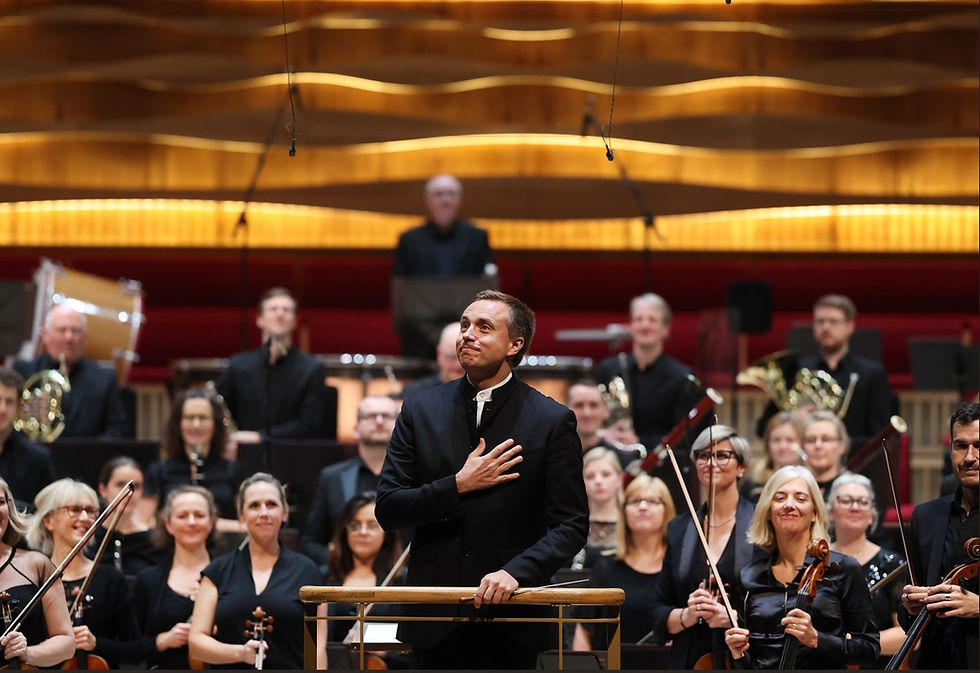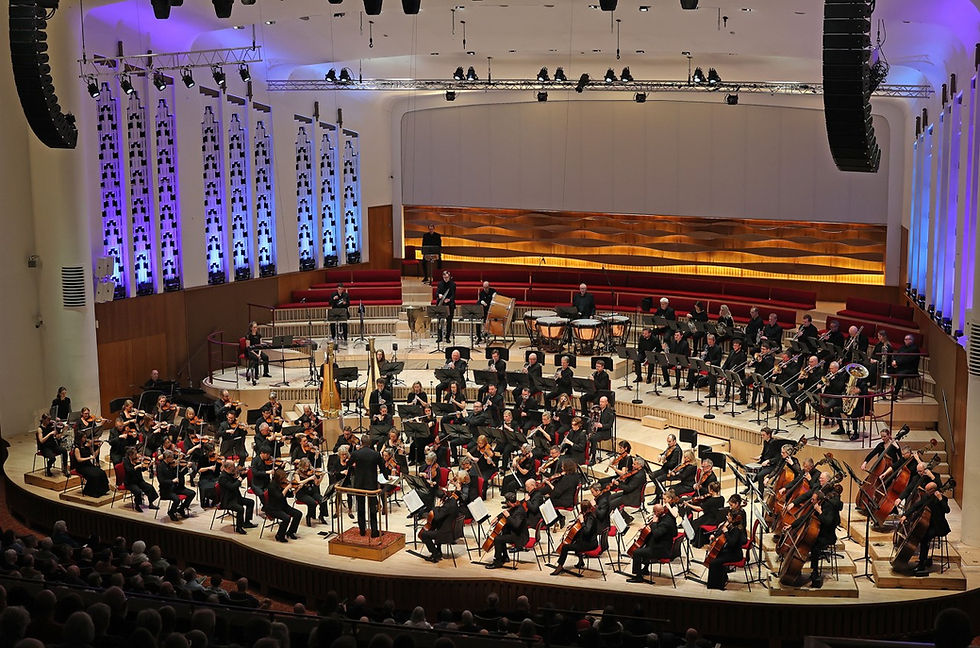Review: Shostakovich Symphony No.7 at Liverpool Philharmonic Hall ****1/2
- Catherine Jones
- Oct 20
- 3 min read

‘Keep calm and carry on’ seems to have been the order of the day at the Philharmonic Hall over the weekend.
And indeed, if it hadn’t been for the email that popped into hundreds of inboxes on Saturday afternoon mentioning a ‘slight’ change of programme because the Phil’s truck had broken down somewhere between Bristol and Liverpool, no one would have been any the wiser.
The main casualty of this unexpected occurrence was Victoria Borisova-Ollas.
The poor Swedish composer must fear her cello concerto Oh Giselle, remember me… is never going to get its UK premiere at Hope Street, with this the fourth time the four way co-commission has been put on the backburner since a Covid-ravaged April 2020 when it was due to be paired with Mahler Five under Vasily Petrenko’s baton.
With limited rehearsal time due to those missing instruments, the visiting Petrenko and soloist Victor Julien-Laferrière opted to swap it out for something completely different, Haydn’s 1784 Cello Concerto in D, which became the light and lyrical ying to Shostakovich's dark and defiant yang that followed the interval.
Haydn in turn followed a favourite Petrenko limb-loosener, Liadov’s impish Baba Yaga, which gave him the chance to deliver a little early enchantment for a near-capacity auditorium of expectant listeners.
Four years after he left Liverpool, the maestro can certainly still pull in a crowd.

Above: Victor Julien-Laferrière plays Haydn. Top: Vasily Petrenko and the RLPO. Photos by Gareth Jones.
If keeping calm and carrying on was the order of the day, so was clarity – marvellous clarity in all things, including Julien-Laferrière’s handsomely-delivered performance of Haydn’s infectious but technically demanding piece with its double stopping, octave spanning and repeat notes a showcase for his skill.
Surrounded by a pared down, responsive chamber ensemble of strings, two oboes and two horns, the cellist impressed with the lyricism and vocal quality he brought to the opening allegro moderato, notably in the movement’s tricky highest registers, an altitude which practically needed oxygen.
An errant mobile phone ring in the auditorium during one particularly quiet and expressive passage (not the only interruption, but certainly the loudest of the afternoon) happily failed to break his concentration, and he followed a poised and elegant adagio with a bubbly and virtuosic rondo finale, perfectly complemented by the Phil.
Happily, there was no need for hours of rehearsal for Shostakovich’s Seventh (Leningrad) Symphony with the orchestra having already performed it at the Bristol Beacon on Thursday – before, rather than after, the transport troubles.

Above: The massed ranks of the Royal Liverpool Philharmonic. Photo by Gareth Jones.
Shostakovich composed most of the monumental work’s first three movements in Leningrad as the Nazi war machine tightened its grip on the besieged city in 1941, although as the composer intimated, he was as much influenced by the destruction Stalin had already wrought on his birthplace as Hitler was to do.
When Petrenko was born in the city three decades later, the emotional – if not the physical - scars remained, and he certainly brought emotion to this latest magisterial rendering of the ‘Leningrad’ with the RLPO, a massed physical force with a mighty phalanx of brass.
Not least in the mighty opening movement which was a masterclass in craftsmanship and control, the almost bucolic and tender opening – flutes winding over a lovely violin melody and piccolo soaring above – disturbed by the faintest hit of snare drum’s martial beat as conflict appeared on the horizon, the danger coming from several different spots all at once to create a surround sound of foreboding.
Petrenko martialled the remorseless waves of Shostakovich’s menacing musical motif (dum-dum de dum dum) with chilling, pulverising precision, advancing it to fearsome levels before the storm broke. No wonder he had to dab the perspiration from his brow at the close.
A lyrical but unsettling moderato, offering fleeting starring roles for oboe, cor anglais, harp and bass clarinet, was followed by an adagio finely balanced between beatific (a lovely flute duet and romantic theme in the violins) and roiling intensity.
And thence to the finale – Petrenko, precision, power and clarity still reigning supreme, driving his orchestral forces to the symphony’s turbo charged, triumphant but also troubled conclusion.







